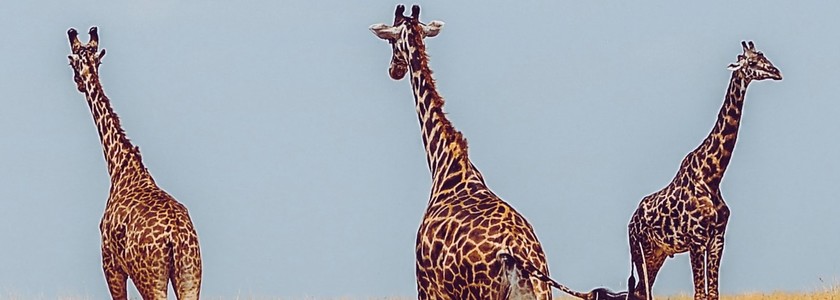

Wildlife Wednesdays: Sharp Decline in Subspecies of Giraffes
Giraffes are the tallest land animal in the world and have roamed the Earth longer than humans. With more humans populating the Earth, this has led to habitat loss through expanding agriculture, human-wildlife conflict, mining, and poaching of these giraffes. A total of nine subspecies of giraffe exist in Africa today. Earlier this year, two giraffe subspecies became listed as "critically endangered" by the International Union for Conservation of Nature (IUCN) Red List of Threatened Species for the very first time. Extinction of these animals is not far away if nothing is changed.
The IUCN reported that, over the last three decades, giraffe populations have dropped 40%! Less than 100,000 of these creatures remain in the wild today. Giraffes are in the "vulnerable category" of the Red List of Threatened Species. Two subspecies of giraffes, the Kordofan and Nubian, are the ones that are being most affected as their population is dwindling. Furthermore, the threat of extinction is increasing at a fast rate in wild areas of East, Central, and West Africa. There are only 2,000-2,650 of Kordofan and Nubian giraffes remaining and it's just one stage away from being classified as "extinct in the wild." As previously mentioned, these giraffes are facing the following two main threats: decreasing habitat and poaching. Villagers and big game hunters often kill giraffes for their meat and pelts, but most are slaughtered for their tail. In some cultures, this is considered a status symbol. Other giraffe species, such as the Reticulated, Thornicroft's, and West African giraffes are also listed as "endangered or vulnerable."
Many people are not aware at how fast the rate of these giraffes are decreasing in the wild, because they are often seen on safari trips and in zoos, according to Dr. Julian Fennessy from IUCN. He goes on to mention that the biggest problem is the lack of attention over the years and we need to raise awareness before it is too late. "Our children might only be able to see giraffes in the zoo," says Fennessy.






